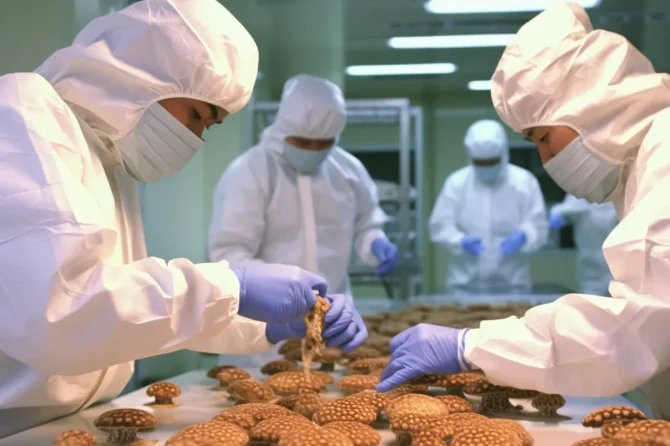Introduction
Researchers from the Wellcome Sanger Institute, the National Center for Child Health and Development in Japan, and Tel Aviv University, in collaboration with other institutions, have made a groundbreaking discovery in understanding the genetic factors contributing to COVID-19 susceptibility. They have developed a powerful tool called GASPACHO (GAuSsian Processes for Association mapping leveraging Cell HeterOgeneity) that captures dynamic changes in gene expression along the innate immune response. GASPACHO has enabled the identification of a gene variant associated with COVID-19 susceptibility and offers potential insights into disease pathogenesis and therapeutic targets. The study, published in Nature Genetics, showcases the utility of GASPACHO and its potential applications in investigating susceptibility mechanisms in various human disorders.
Unraveling the Complexities of COVID-19 Susceptibility: The COVID-19 pandemic has revealed a wide variation in how individuals respond to the disease. While some experience mild-to-moderate symptoms, others suffer from severe respiratory complications requiring hospitalization and intensive care. Genetic differences play a role in this variation, specifically in the regulation of gene expression. Variations in gene expression, known as expression quantitative trait loci (eQTLs), influence the levels of proteins produced by certain genes and can impact disease susceptibility.
GASPACHO
Illuminating the Role of Gene Expression: GASPACHO addresses the challenge of identifying and interpreting complex relationships between gene expression and disease susceptibility. Unlike previous methods that aggregate data from multiple cells, GASPACHO employs single-cell transcriptomics to capture cell-specific resolution, enabling the tracking of gene expression changes over time. By mapping eQTLs, the tool reveals the impact of genetic variation within cells on the overall immune response across individuals.
Identifying the Gene Variant: Using GASPACHO, the researchers identified 1,275 eQTLs within the genome that alter gene expression along the innate immune response. These variations have implications for 40 immune-related diseases, including Crohn’s disease and diabetes. Applying the tool to investigate COVID-19 outcomes, the team discovered a gene variant associated with COVID-19 susceptibility: lower expression of the OAS1 gene. The OAS1 gene encodes a protein involved in clearing viral RNA from cells. Comparing COVID-19 patients to a reference group, the researchers found lower OAS1 expression in nasal epithelial cells and monocytes, the target cells for the virus. This genetic alteration, known as OAS1 splicing QTL, likely influences the efficacy of viral RNA clearance and explains the adverse clinical outcomes in the COVID-19 patient group.
Implications and Future Directions: While further research is needed to fully understand the role of genetic alterations like OAS1 splicing QTL, this discovery provides valuable insights into the molecular mechanisms underlying COVID-19 susceptibility. It also highlights the potential for developing therapeutic strategies that target these genetic mechanisms. Dr. Natsuhiko Kumasaka, first author of the study, suggests that OAS1 and related genes on the same cascade could serve as potential drug discovery targets. Additionally, GASPACHO holds promise for investigating susceptibility mechanisms in a range of other human disorders.
Conclusion
The development of the GASPACHO tool represents a significant step forward in understanding the genetic basis of COVID-19 susceptibility and other immune-related diseases. By capturing dynamic changes in gene expression along the innate immune response, researchers have identified a gene variant associated with COVID-19 susceptibility and shed light on the molecular mechanisms underlying disease outcomes. This breakthrough paves the way for further research into the genetic factors influencing disease susceptibility and the development of targeted therapies. As scientists continue to unravel the intricate interactions between genetics and disease, tools like GASPACHO offer hope in the fight against emerging viruses and a variety of other health conditions.
If you need more information on this article, click on the link below where we reference how we obtained the information for this article.
Click here to view original web page at www.eurekalert.org.





